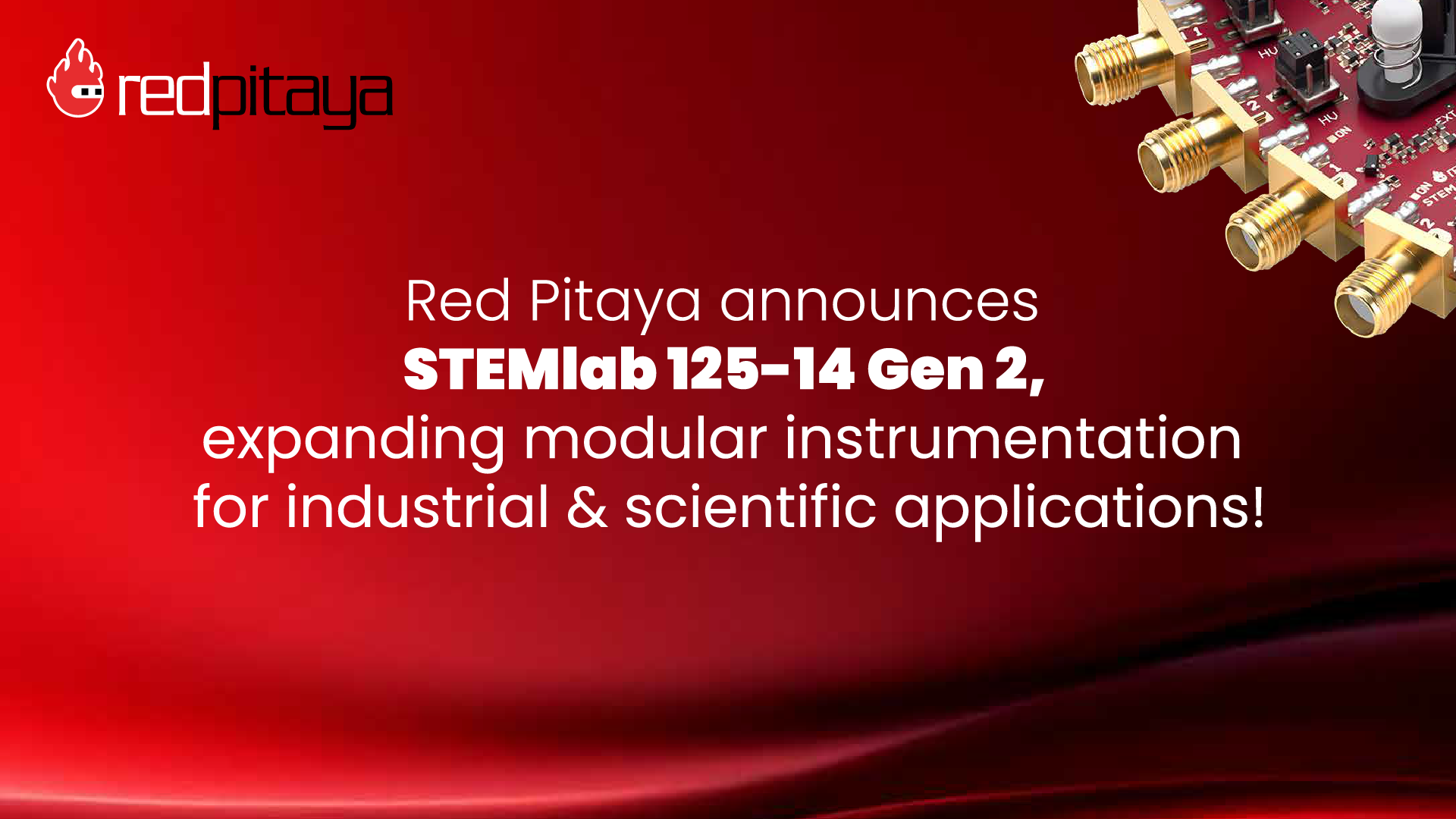Reintroducing JupyterLab to Red Pitaya
- Posted by
 Red Pitaya Team
, September 24, 2024
Red Pitaya Team
, September 24, 2024
.png)
Are you a fan of Jupyter Notebook, Red Pitaya, and Python code? We have some great news for you! With the latest Red Pitaya 2.00 OS releases, we are reintroducing JupyterLab to Red Pitaya, now in a brand new format and with more features than ever before.

What is JupyterLab?
JupyterLab is a web-based interactive development environment that combines notebooks, code, and data. It allows users to work with computational notebooks based on a cell-based principle, where each cell contains program code (Python, Ruby, Julia, etc.), a markdown language description, data, graphs, 3D models, and much more. It’s the next generation of the Jupyter notebook and is a great tool for tutorials, laboratory exercises, or collaborative projects.
How to use JupyterLab on Red Pitaya?
The new JupyterLab is available as an application on Red Pitaya and runs directly on the hardware, no special installation required:
- Connect to the Red Pitaya web interface
- Go to the Development section
- Click on JupyterLab
- Start coding




What’s new?
The old Mercury FPGA image used by the Jupyter Notebook on Red Pitaya has been redesigned and added to the classic v0.94 project. JupyterLab now uses the new Python API commands, which are easy to understand and have the same functionality as the C API and SCPI commands.
The existing examples have also been updated to the new version and now include a step-by-step explanation of how the code works, taking you from basic examples of using Red Pitaya, such as controlling LEDs and toggling digital pins, through data generation to data acquisition using Deep Memory Acquisition, with many steps along the way.


The examples also include all available macros relevant to the example, which will be handy if you want to modify the existing example and save some time without having to check the exact source code on the Red Pitaya GitHub or the code libraries within Red Pitaya's Linux OS. As a new user, you will also appreciate the definitions and explanations of some of the basic data acquisition and generation terms, which are necessary for understanding the topic and which will allow you to bend the program parameters to your will later on.


As the tutorial examples increase in complexity, only the new functionality is explained, keeping the examples short and the code readable. Each example also includes a link to the documentation page with all the available commands, which is useful when streaming for custom functionality.
But don't just take our word for it, install one of the latest versions of Red Pitaya OS and check out the new features for yourself. We have also included the most important links and some great projects made with JupyterLab for Red Pitaya:
Having trouble finding specific information or need help with the code? Ask our new AI assistant Bob or write to support@redpitaya.com.


.jpg?width=767&name=blog%20featured%20image%20(100).jpg)
.jpg?width=767&name=blog%20featured%20image%20(85).jpg)

-1.png)